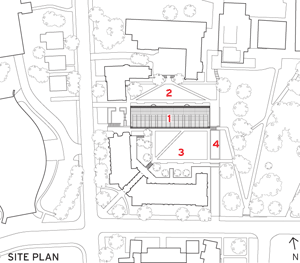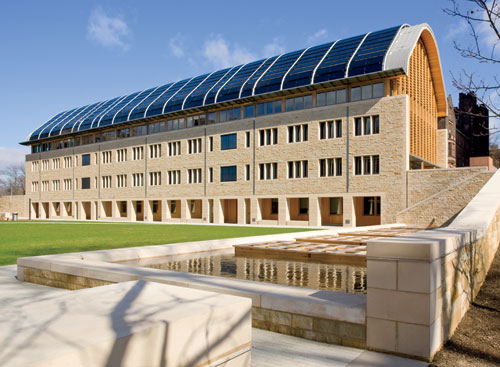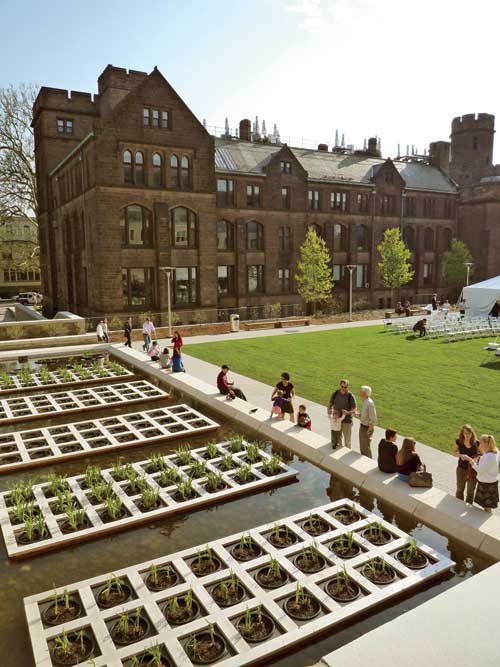Quenching the Built Environment's Thirst for Water
One project that takes a coordinated approach to water conservation, rainwater harvesting, and site development is Kroon Hall, an academic building for Yale University's School of Forestry and Environmental Studies (F&ES) in New Haven, completed in May and on track for LEED Platinum certification. Designed by London-based Hopkins with the Connecticut firm Centerbrook Architects, Kroon consolidates staff offices and other F&ES facilities that had been previously scattered among nine buildings. The long and thin building sits between a pair of L-shaped neo-Gothic structures on a site that had been occupied by a long-defunct power plant and parking lots with impervious pavement. But now, the new and old buildings define a pair of grassy courtyards that help transform the previously almost industrial site into an inviting series of outdoor spaces and play an integral role in Kroon's water-conservation and storm-water-mitigation strategies.
 |
1. Kroon Hall 2. North courtyard 3. Service courtyard 4. Filtration pond |
Â
From the building's southern courtyard, which is essentially a ground-level green roof built atop new loading docks and other services, an underground tank collects runoff and slowly discharges it, lessening the burden on New Haven's combined sewer system. From the roof and the northern courtyard, a rainwater-harvesting system collects runoff and channels the so-called "first flush" - the first inch of rain that falls during a storm - through a filter that removes particulate matter such as leaves, insects, or dirt. Then, all of the water from the roof and northern part of the site, both filtered and unfiltered, empties into a water feature filled with native wetland plants such as cattail, iris, and lotus. The plants, which remove impurities, including nitrogen and phosphates, help make the pond into "a machine for treating water and an asset to the landscape," says Cricket Brien, an associate at Philadelphia-based OLIN, the firm responsible for Kroon's landscape design. From the pond, the treated water is directed to storage tanks and used either in irrigation or toilet flushing.
 |
Kroon's runoff cycles through a water feature (top) containing native wetland plants (below) that remove impurities such as nitrogen and phosphates. Photo: © Robert Benson (top); courtesy Olin (bottom) |
 |
Â
The project team estimates that the rainwater-harvesting and site-design strategies, in combination with water-conserving plumbing fixtures, will result in a 75 percent reduction in potable water use when compared to a standard building, or a savings of about 500,000 gallons per year.









